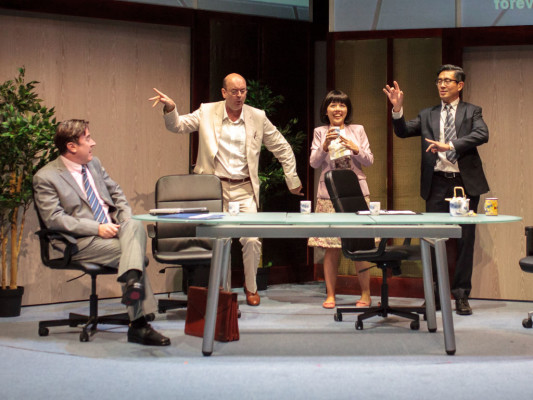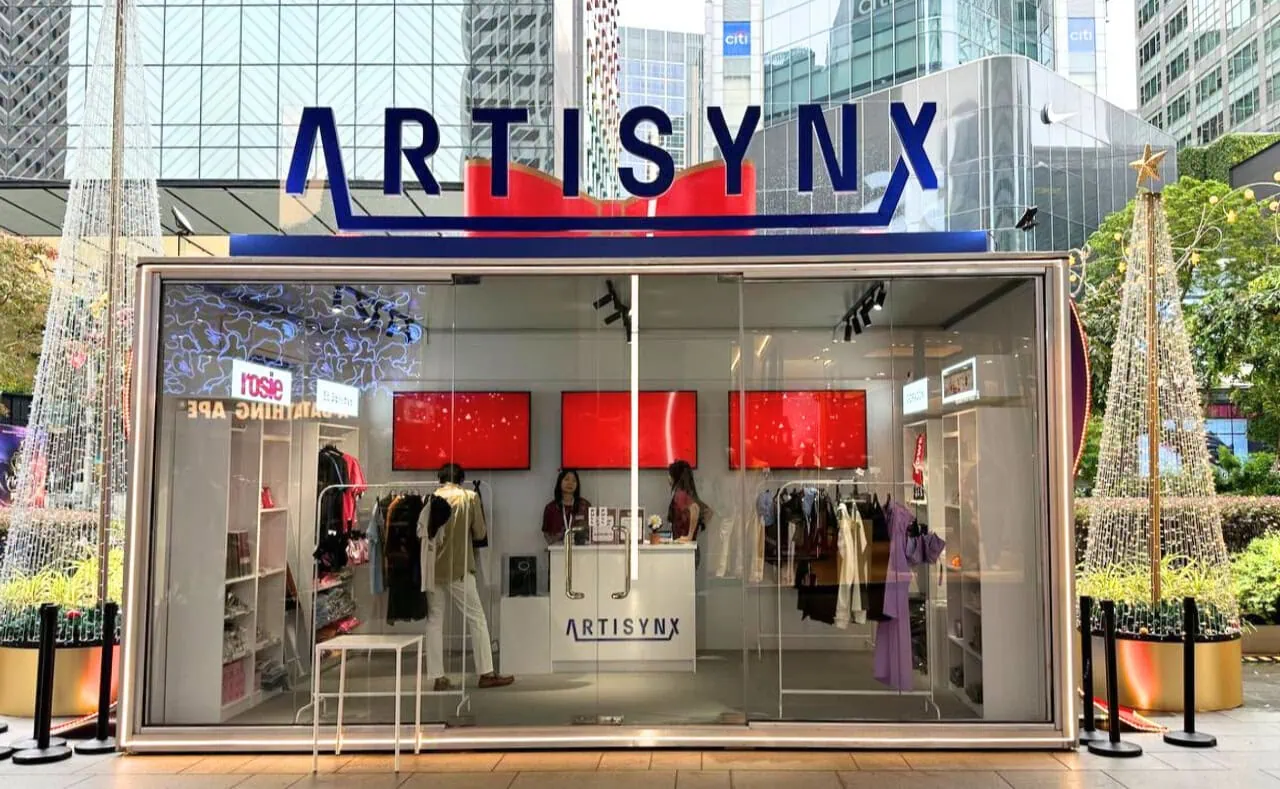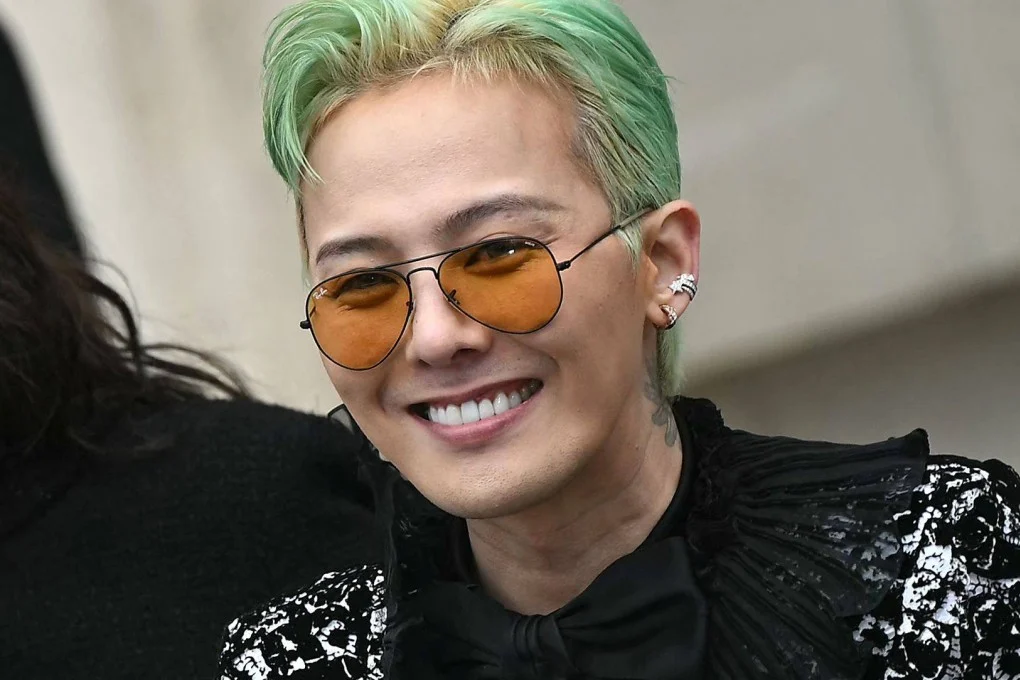What was a Tamil-speaking brown person doing at a English-Mandarin bilingual comedy predominated by farcical mistranslations? Left in unsuspecting stitches of laughter would be the answer.
The final installation of Pangdemonium’s Transformation Trilogy season, Chinglish, was more than just a clash of divergent cultures – it was a collision of identities bounded by the desires for avarice, power and lust. Written by Chinese-American David Henry Hwang, the Broadway sensation was an apt choice for our largely Singaporean audience.
The misconstrued street signs of “Deformed Man’s Toilet” for “Handicapped Restrooms” and ridiculously mistranslated conversations mediated by a variety of translators (all played by the brilliantly talented Audrey Luo) were some of the many hits with the crowd. One would easily find the play’s jab at globalisation relatable considering our day-to-day language battles (Read: Can we all just agree that “chai tea latte” is redundant because “chai” means tea?). Much credit therefore, has to be given to the crew manning the multimedia projector as a slip in the subtitles could have very well left non-Mandarin speaking audiences like myself flailing our arms for help.
Opening with a lecture on mistranslated signs, Chinglish follows the story of American businessman, Daniel Cavanaugh (Daniel Jenkins) who steps into China, with his consultant, Peter Timms (Matt Grey), hoping to land a contract with Minister Cai Guoliang (Adrian Pang) and his associate, Vice Minister Xi Yan (Oon Shu An). A rejected proposal followed by an illicit affair, however, send Cavanaugh through a disarray of muddles as he comes to terms with a dark past.
His blossoming affair with Xi Yan becomes a delight to watch as they humourously demand to be understood in their respective tongues. Besides the communication mishaps, their conflicting ideologies of love and lust get the better of them and I strangely found myself straddling between supporting Xi Yan’s fierce vow towards piety and sympathising with Cavanaugh’s freedom to love.
As always, Pangdemonium scored with set design, playing with layers and height. The monumental Chinese-styled curved roof structures designed by Eucien Chia proved to be a form of grandiose façade to the deceit and power play brewing amongst the characters. Clearly, director Tracie Pang had envisioned for seamlessness given the play’s many set changes. The stage’s roving platform cleverly accommodated the transit from location to location as the audience found themselves trundling past the “back doors” of offices, business meetings, bars and hotel rooms.
The looming web of lies, however, seemed to jump all too quick to reach a climatic point, following Minister Cai’s sentence. While Pang exudes an intensely resolved demeanour in this poignant scene, much of the elaboration was executed in the other subplots instead. There appeared to be insufficient time for the well-liked jocular character to evolve into an enemy of the state. The same goes for Mediacorp artiste’s Guo Liang, who made his theatrical debut as Judge Xu Geming. His brief appearance in the play was kind of a disappointment, though we do admit he was easy on the eyes in his suit and tie ensemble.
Indeed, I could not help but agree with Cavanaugh in his closing statements – “The funny thing is, I enjoy the mistakes” – because true enough, Chinglish is a play that would be remembered for these lovable errors. The plot’s political scandals, despite being eerily uncanny to real world events, could have been more stretched to dig deeper into fraught cross-cultural relationships and confront the similar values we share as humans.
Chinglish runs until 25 October at the Drama Centre Theatre. Tickets are sold out.
Find out more about Pangdemonium’s series of 2016 plays, Seasons of Love!
Stay updated and social with Popspoken: Facebook | Twitter | Instagram









